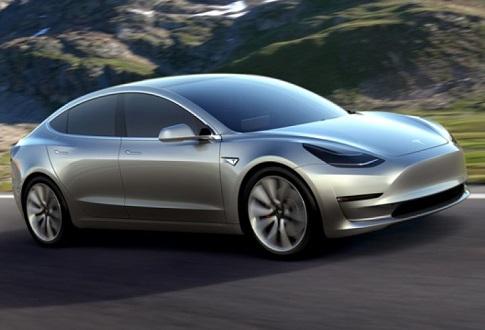Smartphones, Mobile Devices Shift Auto UI At Ford
Ford UI Supervisor Jennifer Brace explains how mobile devices have changed the automaker's approach to user interface in vehicles.


Tesla Model 3, BMW i3: 10 Electric Vehicles To Own
Tesla Model 3, BMW i3: 10 Electric Vehicles To Own (Click image for larger view and slideshow.)
When Jennifer Brace decided to major in mechanical engineering, there was no indication her career would take her into user interface technology. It wasn't until she started working at Ford that the Detroit native discovered her niche for UI design.
That's a career path that many IT professionals might relate to, given that IT organizations are increasingly being pressed into service in working with the business on designing user interfaces for everything from mobile apps to websites. The lessons Brace has learned about user experience are important ones for IT professionals in any industry. Nowadays, it's not enough to know customer needs, you have to know their feelings and expectations about technology. This requires collecting user data as well as spending one-on-one time with customers.
As an intern, Brace learned there were opportunities for mechanical engineers outside traditional work on engines and brake systems. Her rotation allowed her to explore different areas and she found she enjoyed designing the user interface for touchscreens and in-vehicle entertainment.
"It really resonated with me, doing something more customer-focused and tangible from an everyday user's perspective," she said of learning about the UI field. "I wanted to work on something that would be understood by everyday drivers."
[Read: How Ford's CIO is driving towards the future of auto tech.]
Now Brace works at the Ford Research and Innovation Center in Palo Alto, Calif., where she focuses on learning about customer needs and how they influence the user interface in Ford cars.
Her team of user experience (UX) researchers conducts studies on far-reaching technologies like autonomous driving, connectivity and data analysis, all of which have the potential to someday be integrated into user vehicles.
Their goal is to evaluate consumers' feelings and expectations about these technologies before they appear in cars. Brace serves as a customer representative to engineers and software developers who develop in-vehicle tech but may not know what drivers want.
There are several means of collecting user data, Brace explained, but methodology depends on the type of data needed. If it needs basic information (gender, income, typical driving environment), it will send a bunch of online surveys and analyze responses.
However, it's also important to spend one-on-one time with customers because their driving habits give researchers deeper insight than they can gain from virtual surveys. Oftentimes pain points that seem normal to drivers, like carrying heavy bags, can be an opportunity for Ford to improve the user experience.
What have their findings uncovered? "The consumer electronics business is pushing us more than anything," said Brace. The rapid evolution of smartphones, tablets, wearables, and other mobile devices has transformed customer expectations for in-car technology.
This poses a challenge to an industry not quite accustomed to rapid change. Consumers swap their mobile devices for upgraded models every couple of years, said Brace, and they expect the same advanced technology in their vehicles -- despite the fact their cars will typically last much longer than their smartphones and tablets.
Ford aims to meet expectations by enabling users to connect their devices and cars in a way that feels seamless and connected. Because it's easy to assume most people have smartphones, the team has tried to create an interface that lets drivers use their phones in a way that's both seamless and connected.
An example is the Ford SYNC AppLink, which connects drivers with iOS or Android smartphone apps using voice commands. Brace noted how a current project will let drivers connect to the Amazon Echo home service, which will let them control home appliances using voice activation.
"It's helping to expand your technology footprint to connect more of the different things in your life that had been separate before," she explained.
Going forward, Brace said, Ford will continue to evaluate user expectations for their mobile devices and how they can be applied to improve in-car technology.

About the Author(s)
You May Also Like
How to Amplify DevOps with DevSecOps
May 22, 2024Generative AI: Use Cases and Risks in 2024
May 29, 2024Smart Service Management
June 4, 2024







